Boundaries
- 1918–1945: The Urban Districts of Finchley and Friern Barnet.
- 1945–1950: The Municipal Borough of Finchley, part of the Municipal Borough of Hornsey, and part of the Urban District of Friern Barnet.
- 1950–1974: The Municipal Borough of Finchley, and the Urban District of Friern Barnet.
- 1974–1997: The London Borough of Barnet wards of East Finchley, Finchley, Friern Barnet, St Paul's, and Woodhouse.
In 1918 the constituency was created as a county division of Middlesex, centred on the town of Finchley, which before 1918 had been located in the Hornsey constituency. In 1934 the Finchley district became a Municipal Borough.
In 1945 there was an interim redistribution of parliamentary constituencies to split those with more than 100,000 electors, prior to the general redistribution of 1950. Middlesex was significantly affected by the interim changes.
In 1950 the seat was re-classified as a borough constituency, with the boundaries reverting to those of 1918.
In 1965 the area of the constituency changed counties from Middlesex to London. Specifically its areas joined with others to form the London Borough of Barnet of Greater London.

Chipping Barnet is a constituency created in 1974 and represented in the House of Commons of the UK Parliament since 2005 by Theresa Villiers of the Conservative Party. It is part of the London Borough of Barnet, on the border with Hertfordshire.

Romford is a constituency in Greater London represented in the House of Commons of the UK Parliament since 2001 by Andrew Rosindell, a Conservative.

Spelthorne is a constituency in Surrey represented in the House of Commons of the UK Parliament since 2010 by Kwasi Kwarteng, a Conservative, who served as Chancellor of the Exchequer for 38 days in September and October 2022.

St Albans is a constituency represented in the House of Commons of the UK Parliament since 2019 by Daisy Cooper, a Liberal Democrat.
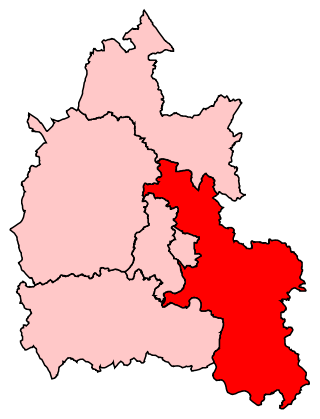
Henley is a constituency in Oxfordshire represented in the House of Commons of the UK Parliament since 2008 by John Howell, a Member of Parliament from the Conservative Party.
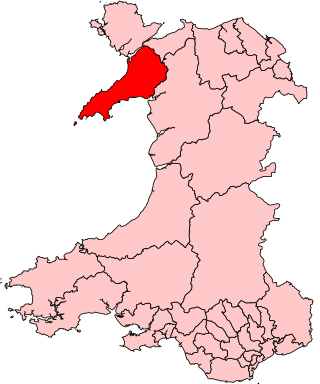
Caernarfon was a parliamentary constituency centred on the town of Caernarfon in Wales. It elected one Member of Parliament (MP) by the first past the post system.

Llanelli is a constituency of the House of Commons of the Parliament of the United Kingdom. From 1918 to 1970 the official spelling of the constituency name was Llanelly. It elects one Member of Parliament (MP) by the first past the post system of election. Since 2005, it is currently represented by Nia Griffith of the Labour Party.
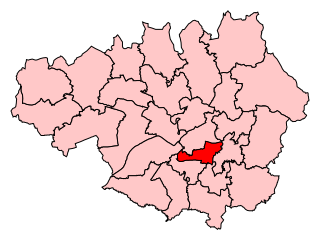
Manchester Gorton is a constituency represented in the House of Commons of the UK Parliament by Labour's Afzal Khan, who was elected at the 2017 general election. It is the safest Labour seat in Greater Manchester by numerical majority and one of the safest in the country.
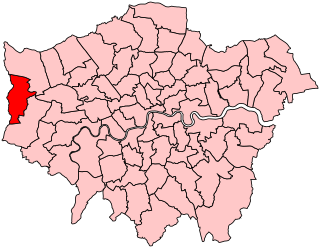
Uxbridge was a seat returning one Member of Parliament (MP) of the House of Commons of the UK Parliament from 1885 to 2010. Its MPs elected were: Conservative Party candidates for 107 years and Labour Party candidates for 18 years. The closing 40 years of the seat's history saw Conservative victory — in 1997 on a very marginal majority in relative terms.

Hornsey and Wood Green is a constituency in Greater London created in 1983 and represented in the House of Commons of the UK Parliament since 2015 by Catherine West, of the Labour Party. To date it has drawn together for general elections parts of the London Borough of Haringey.

Edmonton is a constituency in Greater London, created in 1918 and represented in the House of Commons of the UK Parliament since 2015 by Kate Osamor, who was elected for the Labour Co-operative party but has since lost the Labour whip. Edmonton is a North London constituency based around district of Edmonton in the London Borough of Enfield.

Finchley and Golders Green is a constituency created in 1997 represented in the House of Commons of the UK Parliament. Mike Freer of the Conservative Party was first elected for the seat in 2010, and in January 2024 he announced that he would not stand at the forthcoming general election.

Hendon is a constituency in Greater London represented in the House of Commons of the UK Parliament since 2010 by Matthew Offord of the Conservative Party, who announced in May 2023 that he would stand down at the next general election. It was created for the 1997 general election; an earlier version of the seat existed between 1918 and 1945.
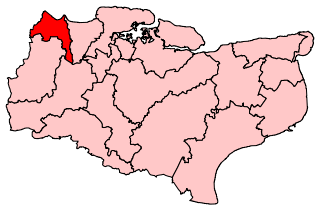
Dartford is a constituency in Kent represented in the House of Commons of the UK Parliament since 2010 by Gareth Johnson of the Conservative Party. It is the longest bellwether constituency in the country: the party of the winning candidate has gone on to form the government at every UK general election since 1964. Candidates for the largest two parties nationally have polled first and second since 1923 in Dartford.
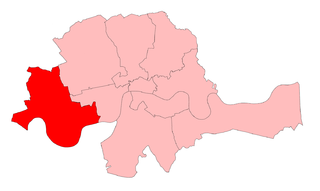
Chelsea was a borough constituency, represented in the House of Commons of the Parliament of the United Kingdom.
Dulwich was a borough constituency in the Dulwich area of South London, which returned one Member of Parliament (MP) to the House of Commons of the Parliament of the United Kingdom.

Hornsey was a constituency that returned one Member of Parliament (MP) to the House of Commons of the UK Parliament, 1885 — 1983. It was then largely replaced by Hornsey & Wood Green. Its voters using the first-past-the-post system elected the Conservative Party candidate at each election. Its closest result was a 1.29% majority at the 1966 election which saw the start of the Second Wilson Ministry. From 1945 onwards the runners-up in the seat were the Labour Party candidates.
Brentford and Chiswick was a constituency 1918 – 1974 centred on the Brentford and Chiswick districts of Middlesex which became parts of west London in 1965. It returned one member (MP) to the House of Commons of the UK Parliament.

Enfield was a constituency for the House of Commons of the UK Parliament from 1885 until 1950. The area sloping to the River Lea in the east was in the far north of Middlesex centred on the town of Enfield. The area formed part of the London conurbation and was much reduced over the course of its existence, in 1918 and then insignificantly in 1945 due to suburbanisation and urbanisation. It returned one Member of Parliament (MP).
Finsbury Central was a parliamentary constituency that covered the Clerkenwell district of Central London. It returned one Member of Parliament (MP) to the House of Commons of the Parliament of the United Kingdom, elected by the first past the post system.
This page is based on this
Wikipedia article Text is available under the
CC BY-SA 4.0 license; additional terms may apply.
Images, videos and audio are available under their respective licenses.




















